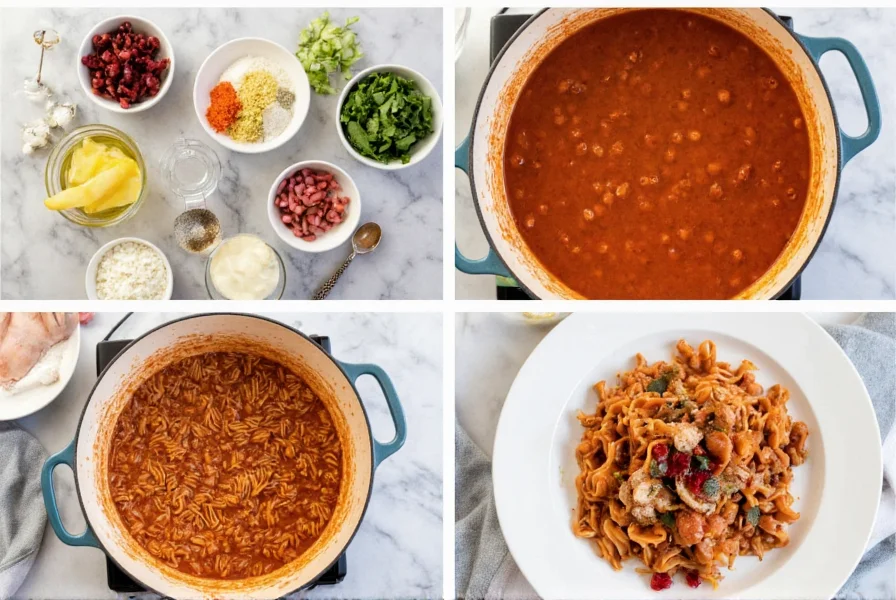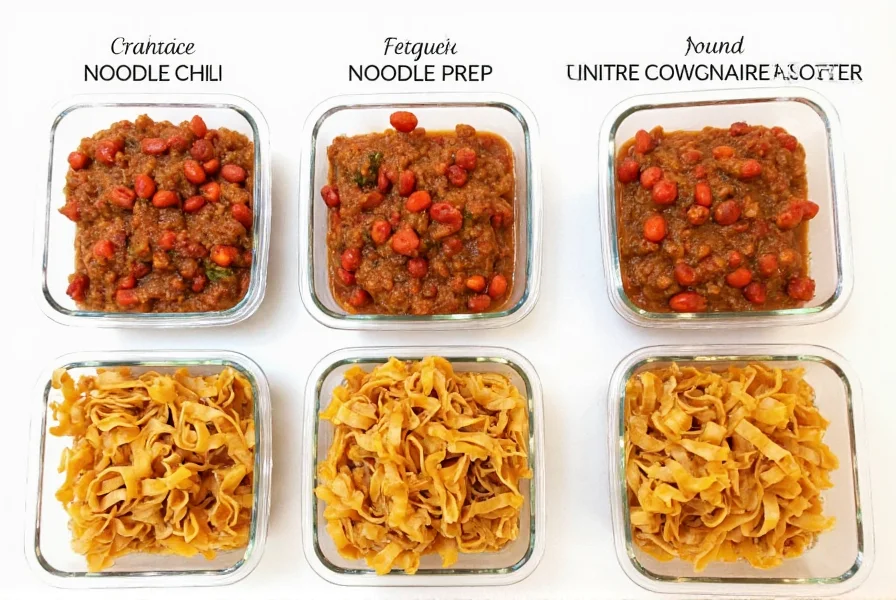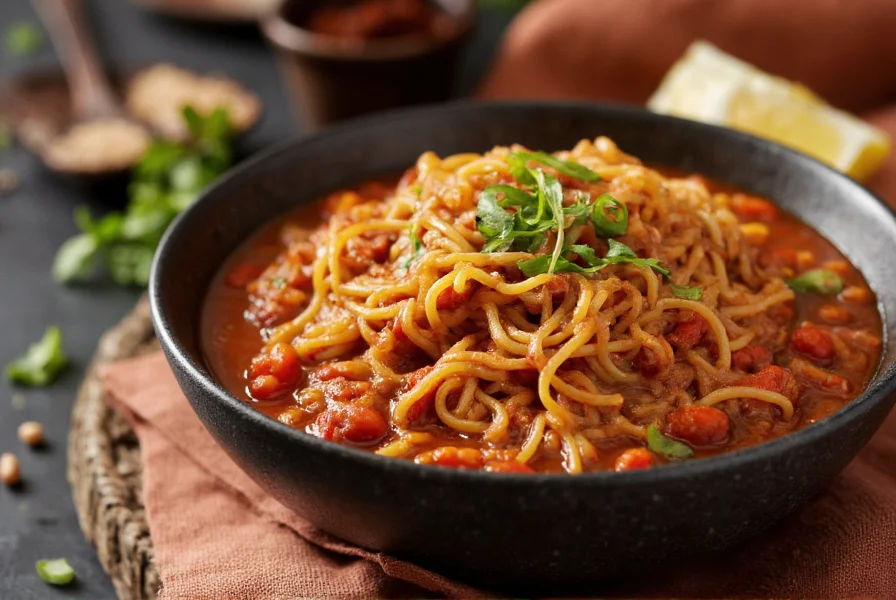When you're looking for a quick weeknight dinner that delivers maximum comfort with minimal effort, noodle chili stands out as an exceptional choice. This dish bridges culinary traditions by merging the robust, spicy flavors of classic chili with the satisfying texture of pasta, resulting in a meal that's both familiar and excitingly different.
The Origins of Noodle Chili
While traditional chili con carne has deep roots in Texas and Mexican culinary history, the addition of noodles represents a more recent American innovation. Food historians trace noodle chili's emergence to mid-20th century American home cooking, when resourceful cooks began experimenting with adding pantry staples to classic recipes. The dish gained popularity during the 1950s and 1960s as packaged egg noodles became widely available, offering home cooks an easy way to transform standard chili into a more substantial meal.
Essential Components of Authentic Noodle Chili
Creating exceptional noodle chili requires understanding its fundamental components and how they interact. Unlike traditional chili served over rice or with cornbread, the noodle element fundamentally changes the texture and eating experience.
| Component | Traditional Chili | Noodle Chili |
|---|---|---|
| Base Texture | Thick, stew-like | Slightly thinner to accommodate noodles |
| Noodle Integration | N/A | Noodles either mixed in or served underneath |
| Serving Temperature | Hot | Very hot (noodles absorb heat) |
| Common Add-Ins | Cheese, sour cream | Extra cheese, herbs, breadcrumbs |
Step-by-Step Preparation Guide
Mastering how to make noodle chili recipe requires attention to timing and technique. The key difference from traditional chili preparation lies in coordinating the noodle cooking with the chili simmering.
- Brown your meat - Use 1-1.5 pounds of ground beef or turkey in a large pot over medium-high heat
- Add aromatics - Incorporate 1 diced onion, 3 minced garlic cloves, and 1 diced bell pepper
- Build flavor base - Stir in 2 tablespoons chili powder, 1 teaspoon cumin, 1/2 teaspoon smoked paprika
- Add liquids and beans - Pour in 1 (28-ounce) can crushed tomatoes, 1 cup broth, and 2 cans beans (drained)
- Simmer - Cook uncovered for 30-45 minutes to develop flavors
- Cook noodles separately - Prepare 8-12 ounces egg noodles according to package directions
- Combine carefully - Mix noodles into chili or serve chili over noodles to prevent mushiness

Regional Variations Worth Trying
One of the most appealing aspects of noodle chili is its adaptability across different culinary traditions. Understanding noodle chili vs traditional chili helps appreciate these regional twists:
- Texas-Style Noodle Chili - Omit beans, use coarsely ground beef, and add a touch of coffee for depth
- Cincinnati Noodle Chili - Incorporate cinnamon and allspice with spaghetti instead of egg noodles
- Midwest Casserole Version - Layer chili and noodles with cheese for baking
- Vegetarian Noodle Chili - Substitute meat with mushrooms and extra beans
Perfect Pairings and Serving Suggestions
When serving noodle chili, consider these complementary elements that enhance the dining experience. Unlike traditional chili that often stands alone, noodle chili benefits from thoughtful accompaniments that balance its hearty nature.
For the best noodle chili serving suggestions, try:
- Freshly grated Parmesan or sharp cheddar cheese
- Chopped green onions or fresh cilantro
- A dollop of sour cream or Greek yogurt
- Simple green salad with vinaigrette dressing
- Crusty bread for dipping
Troubleshooting Common Noodle Chili Issues
Even experienced cooks encounter challenges when preparing this dish. Understanding noodle chili cooking time and technique prevents common pitfalls:
- Soggy noodles - Always cook noodles separately and combine just before serving
- Dry chili - Maintain proper liquid-to-solid ratio (add broth if needed)
- Bland flavor - Layer spices at different cooking stages for complexity
- Overpowering spice - Balance with a touch of honey or apple cider vinegar
Storage and Reheating Best Practices
Proper storage techniques ensure your noodle chili maintains quality through multiple meals. Unlike traditional chili that often improves with storage, noodle chili requires special attention due to the pasta component.
For optimal results when making easy weeknight noodle chili for meal prep:
- Store noodles and chili separately if possible
- Consume within 3-4 days for best texture
- Reheat with a splash of broth to restore moisture
- Avoid microwaving on high power (use medium setting)

Nutritional Considerations and Healthy Substitutions
For those seeking healthier options without sacrificing flavor, several effective substitutions work well in noodle chili. These healthy noodle chili substitutions maintain the dish's comforting essence while improving its nutritional profile.
- Use whole wheat or chickpea noodles for added fiber
- Substitute ground turkey for beef to reduce saturated fat
- Add extra vegetables like zucchini or carrots for volume
- Reduce sodium by using no-salt-added tomatoes and broth
- Include a variety of beans for plant-based protein
Frequently Asked Questions
What type of noodles work best in noodle chili?
Egg noodles provide the classic texture and flavor pairing, but wide egg noodles or even broken spaghetti work well. For gluten-free options, rice noodles or chickpea pasta maintain structure better than other alternatives when mixed with chili.
Can I make noodle chili in a slow cooker?
Yes, but cook the noodles separately and add them just before serving. Prepare the chili in the slow cooker on low for 6-8 hours, then combine with freshly cooked noodles to prevent mushiness. This method creates an excellent easy weeknight noodle chili option when prepared ahead.
How do I prevent my noodle chili from becoming too watery?
Simmer the chili uncovered for the last 15-20 minutes to reduce excess liquid before adding noodles. If already too watery, create a slurry with 1 tablespoon cornstarch mixed with 2 tablespoons cold water, then stir into the simmering chili until thickened.
What's the difference between noodle chili and spaghetti chili?
While similar, noodle chili typically uses egg noodles and maintains a thicker consistency, whereas spaghetti chili uses traditional spaghetti pasta and often has a saucier texture similar to bolognese. The spice profile in noodle chili tends to be more Tex-Mex influenced compared to the Italian-American flavors sometimes found in spaghetti chili.
Can I freeze noodle chili for later use?
It's best to freeze the chili component without noodles, as pasta becomes mushy when frozen and reheated. Freeze the chili separately, then cook fresh noodles when you're ready to serve. This approach preserves the ideal texture when making noodle chili for meal prep purposes.











 浙公网安备
33010002000092号
浙公网安备
33010002000092号 浙B2-20120091-4
浙B2-20120091-4